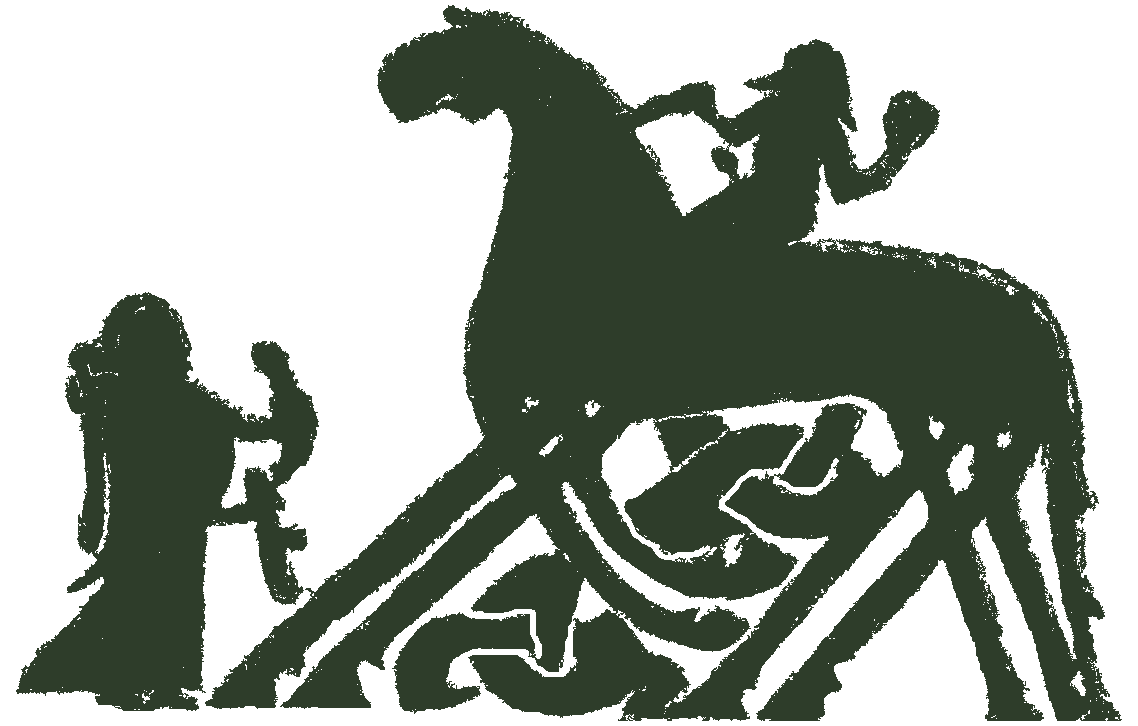in progress
Following Ragnarök, two humans have survived the fall of the worlds and they will again poplulate the human race.
text
Gylf ch. 53b
53b. Líf and Lifþrasir
En þar sem heitir Hoddmímisho... | And in a place called Hoddmim... |
[status: unverified copy]
commentary
context
Gylfaginning, which is part of Snorra Edda, was composed in Iceland in the 13th century, and holds the stories of many of the Pre-Christian myths of northern Europe. It is believed to have been composed by the Icelander Snorri Sturlusson. Snorra Edda consists of three separate parts, Gylfaginning, Skaldskápamáland Háttatal, all functioning together as a greater work and guide for the aspiring medieval poet and storyteller.
commentary
Líf (EN: life) and Lífþrasir (EN: the one striving after life) are described as the two humans who survive Ragnarök. They are mentioned in Gylfaginning as well as in Vafþrúðnismál 45. They are said to be the ancestors of a new group of humans to populate the earth. They are said to be closely connected to Yggdrasill, the world tree, referenced to through the mention that they live in the woods of Hoddmimir, feeding of the morning dew (Vafþrúðnismál 45 and Gylfaginning 52). This corresponds with the tale of the creation of Askr and Embla, the first humans, created from tree trunks, as is told also by Snorri in Gylfaginning. Germanic religions share the idea of humans being created from tree trunks, such as the Bavarian legend of the shepherd who resides in a tree trunk and who is the ancestor of a new group of humans who repopulate the land after the plague. The same can be found in Örvar-Odds saga where Örvar Odd lives as a tree-man. Archaeological remnants of human figurines made from wood are also found widely across Scandinavia dating to prehistory, often connected to water ways and sites of ritual depositions and offerings. This is possibly remnants of fertility and cults connected to ancestor worship.
For more, see for example:
Aldhouse-Green, M. (2004) An Archaeology of Images: Iconology and Cosmology in Iron Age and Roman Europe, London/New York: Routledge
Ellis Davidson, H. R, (1990), Gods and Myths of Northern Europe. London: Penguin Books. pp. 202
Müller-Wille, M. (1999) Opferkulte der Germanen und Slawen, Archäologie in Deutschland, Sonderheft, Stuttgart: Theiss
Oldeberg, A. (1957), Några träidoler från förhistorisk och senare tid. Fornvännen 52, pp. 247–58.
Simek, Rudolf (2007), Transl: Angela Hall. Dictionary of Northern Mythology. Cambridge: D.S. Brewer. pp. 189
Van der Sanden, Wijnand, and Capelle, Torsten (2001). Mosens Guder: antropomorfe traefigurer fra Nord- og Nordvesteuropas fortid / Immortal Images: Ancient Anthropomorphic Wood Carvings from Northern and Northwest Europe. Silkeborg Museum.
(Contributed by Liv Marit Aurdal.)
tags
Main text: Gylfaginning
Attributes: Afterlife Fertility Death Creation Ragnarök
Named things:
Text sections: SnSt, Gylf ch. 53b
